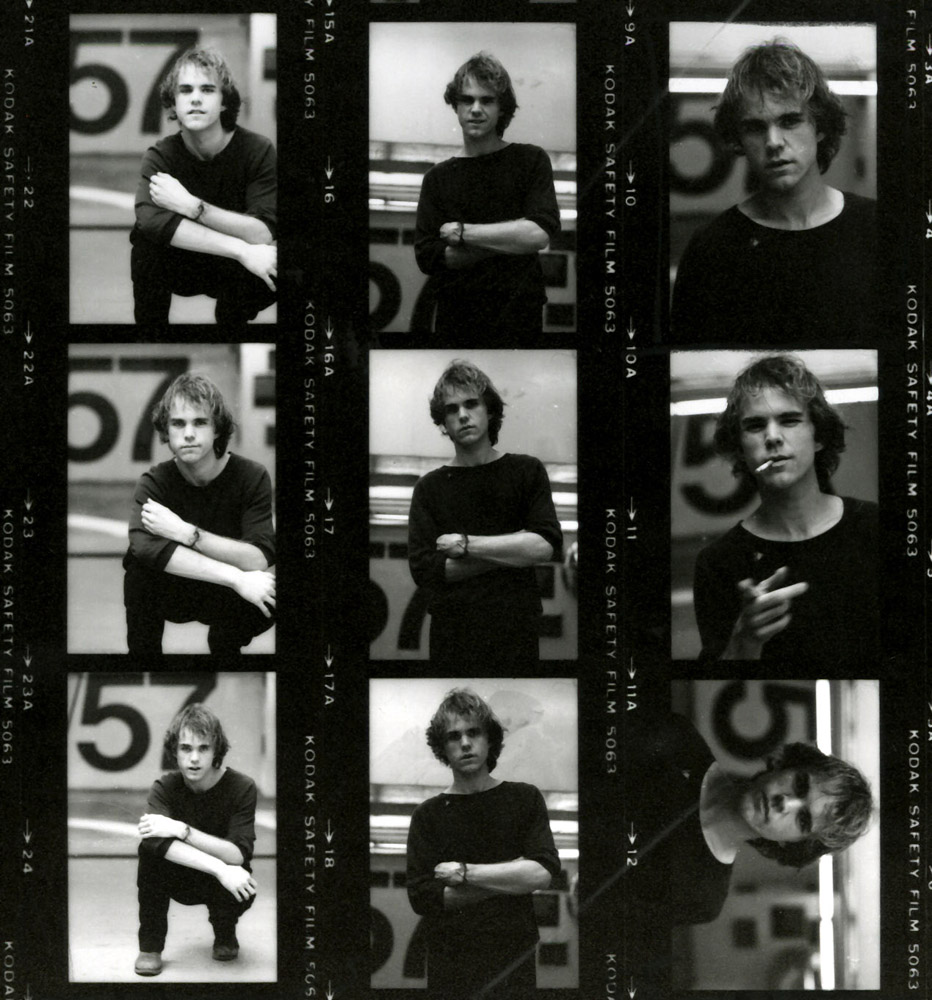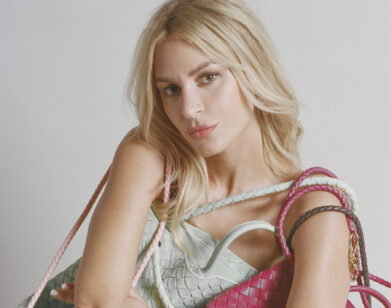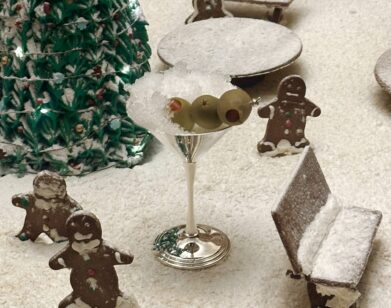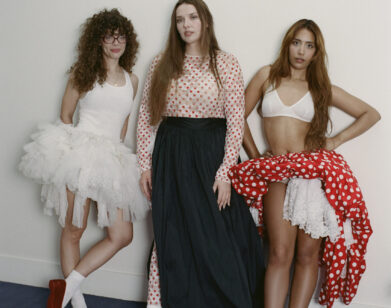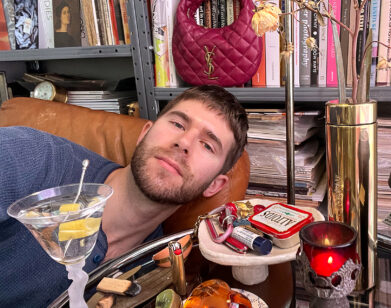Kate Simon on Stephen Sprouse
In this week when all the world has been re-introduced to the work Stephen Sprouse mania, iconic photographer Kate Simon was there first. Simon has a frequent Sprouse collaborator, constant Sprouse c0mpanion, and sometime Sprouse street model. A noted New York-based photographed, Simon has shot predominantly musical subjects, but also artists of all stripes, cooks, fashion designers, and businessmen. She’s at on a new book of portraits, but she stopped to remember in exotic detail the years when her life as part of the Stephen Sprouse contingent.
On how they met:
I was introduced to Stephen by Patti Smith’s collaborator and pianist, Richard Sohl. We met at the apartment where I still live. The night I met him, I took an iconic photo of Debbie Harry. That same night he asked me if I wanted to take over his apartment, and I’ve been living there ever since. That was 30 years ago.
On his art:
He had his own large-format, huge Xerox color machine. It was his own, and it was totally unheard of at the time. He would create pictures by accumulating parts of the whole in eight- by ten-inch pieces. He would chart them out and take a staple gun he’d staple them together. It was almost impossible to imagine the proportions of the entire picture from just those small pieces, but he made them look seamless. A series of Edie Segwick was the first work of his that I saw: It was about five-by-four feet, and it was the the first thing you’d see when you walked into his apartment.
On working together:
We had an arts lab, Candy Pratts Price, Debbie Harry, Stephen and I, on 58th Street. Stephen called it the 58th Street Hotel. We were this tribe of artists. We were all really close for three or four years, from 1977-81. We were inseparable then. I collaborated with him. I shot his entire first collection. The model was Karen Bjorenson, and Stephen did silk screens of television static.
On make-up:
Stephen was committed to eye make-up. It was my photo of Pierre Clementi that he used, and enlarged with photocopies. Part of the reason Stephen was so drawn to my photograph of Pierre was because of the way Pierre himself had put kohl on his eyes. Stephen loved that, and proceeded to make a four-by-five-foot yellow and orange Day-Glo Xerox piece of my picture of Bob Marley’s Kaya album cover, and he gave Marley kohl eyes there too. Stephen also did a medium color staple gun Xerox piece of me, and drew on the heavy kohl eye makeup on the eyes on the piece in magic marker, and made the piece from a photograph that he took of me in a pink dress he made in front of a poster of my photograph of The Clash’s first album cover, which I shot.
…And on getting dressed together:
He always wanted to put on our make-up as we’d go out. Part of our collaboration with Stephen was, of course, socializing with him. He loved to dress us up, to put us in one his dresses. He would put us in these impossible clothes-you have got to be kidding me!-I found myself wearing some crazy stuff-Velvet parachute dresses. He’d shoot Polaroids of them, and then we’d all go to Studio 54 and he would show us off. For Stephen, Rock ‘n Roll was glamorous. It sounds pedestrian now, but at the time rock stars being well dressed was unheard of. Previously, rock people weren’t wearing gorgeous clothes; punk wasn’t chic. Debbie Harry was smart to let Stephen help her with her image. He dressed her and really was responsible for the way she looked in the beginning of her career. I don’t know if Stephen is the reason Debbie had these eyes, but I do know that when I shot the famous image of her on the roof of 58th Street, taken the first day I met both Stephen and Debbie, he did her makeup that day.
We’d go over to his apartment and he would take endless Polaroids. He would make us put on what he wanted. He really was styling all of us at the same time. There was a lot of bartering going on. He was styling Debbie. He was styling me. And I had a role to play. I wouldn’t go over and just walk into his apartment without putting on an outfit before. He’d open the door with a look on his face. He would say ‘What is that?’ He was committed to fashion, he was very shy, and we were his rock stars.
On sweatpants in public:
Stephen added zippers to sweatshirts; he had a really keen eye take classics and tweak them. Before sportif, before yoga pants, Juicy sweatpants, before anything, Stephen was so keen on black sweet pants with drawstrings. He’d make me put them on and parade up and down 57th Street while he took Polaroids. I was tentative about the whole thing. It was unheard of.
On Babs:
Stephen was really so influenced by Barbara Streisand. He loved her, and he was fascinated with her. He was obsessed with her eye make-up, her Cleopatric eye. Why he was keen on her I can’t really explain, but the sailor top inspired by her.
On early fame:
The New York Times wrote a piece on Stephen when he was 16. It was called “Is this boys a genius?” Stephen and I got a good laugh out of that piece, but he was proud of it at the same time.
Slideshow copyright Kate Simon

